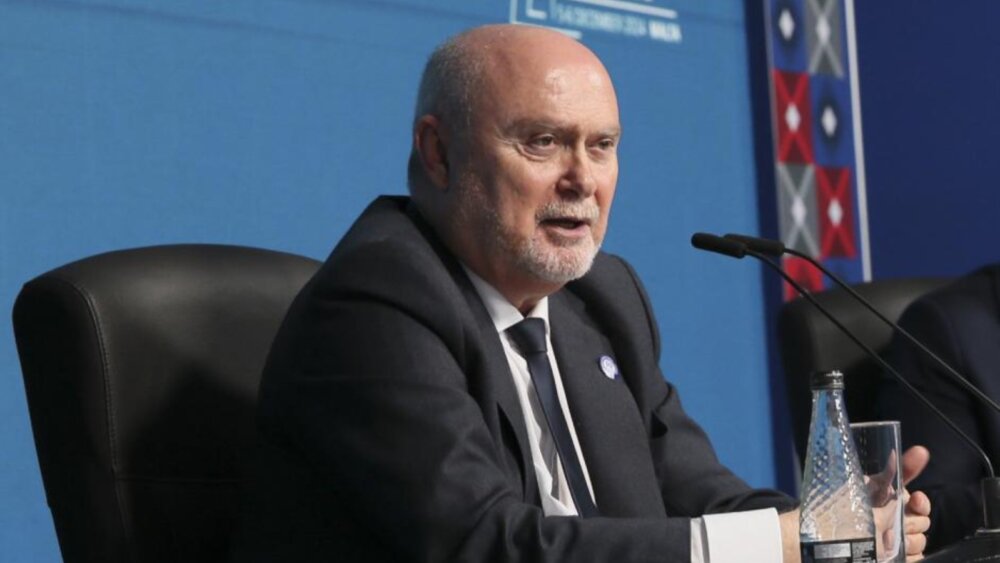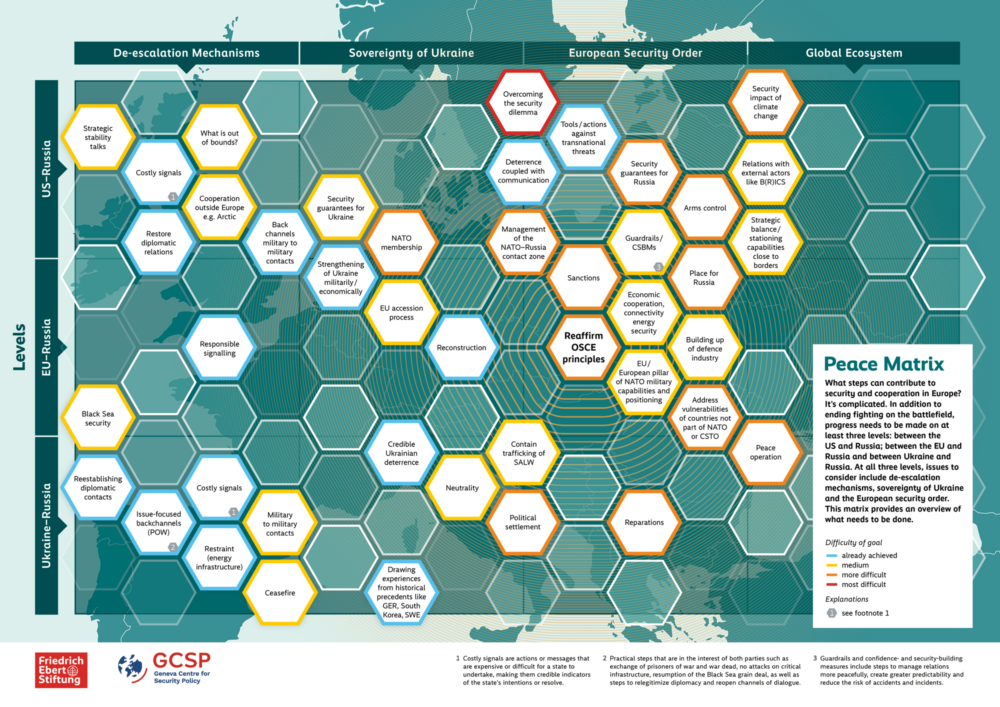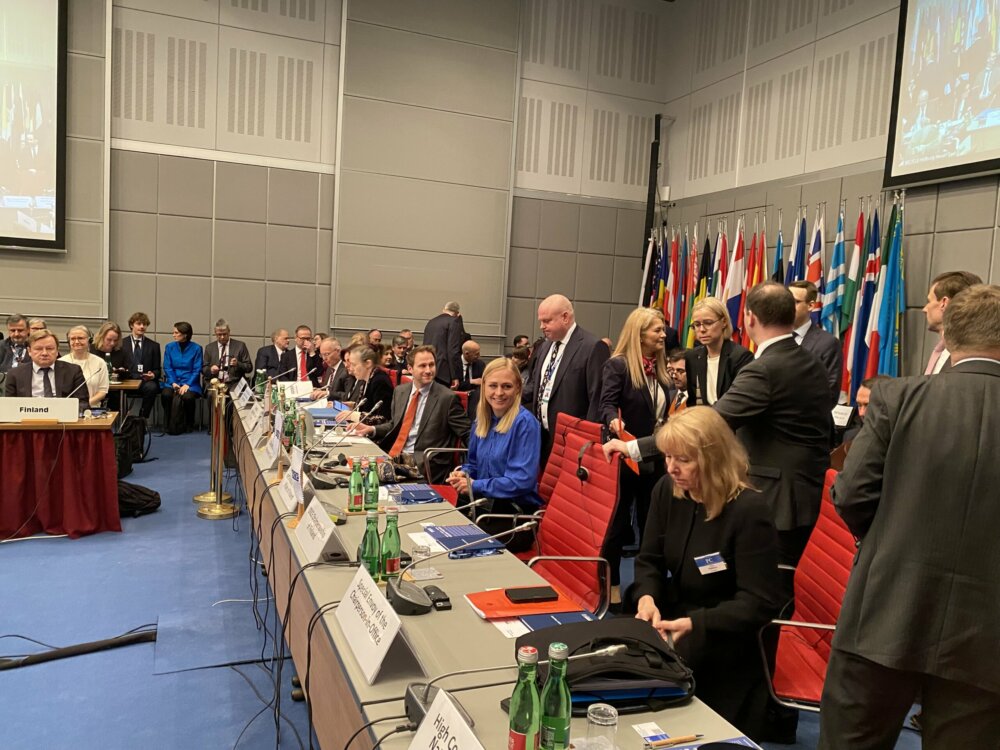OSCE Ministerial Council meeting in Dublin agrees on roadmap until 2015 but fails to overcome major differences
On 6 and 7 December 2012, Ireland hosted the 19th OSCE Ministerial Council meeting in Dublin. The OSCE Ministerial Council (MC) meets once a year in the country holding the Chairmanship. The meetings are an opportunity to discuss the Organization’s yearly achievements and should provide overall guidance and impetus for future work. The meeting was attended by foreign ministers or their representatives from the 57 OSCE participating States. In addition, the meeting was joined by representatives from the OSCE’s six Mediterranean Partners for Co-operation as well as by the five Asian partner states. The MC was preceded by a gathering of civil society and NGO representatives on 5 December.
The Dublin MC was held amid strong political differences among the OSCE’s key players. Differences as to the balance of the priority issues on the OSCE agenda remain and have indeed intensified over the last years. This negative trend was echoed in statements by US Secretary of State Hillary Clinton as well as Russian Foreign Minister Sergey Lavrov. As was the case at last year’s MC meeting in Vilnius, this year’s meeting again failed to adopt decisions in the human dimension. Although a number of human dimension decisions were tabled – such as on strengthening media freedom (a topic very close to the heart of the outgoing Irish Chairmanship) and on combating racism and xenophobia – none of them reached the necessary consensus. This is a very worrying trend.
Despite those stark differences, ministers did agree to launch the Helsinki+40 process “as an inclusive effort by all participating States to provide strong and continuous political impetus” to realize the vision of a “Euro-Atlantic and Eurasian security community,” agreed upon at the 2010 Astana Summit. The Helsinki+40 decision calls on the forthcoming Chairmanships of Ukraine, Switzerland and Serbia to adopt a “co-ordinated and strategic approach” and to establish an “open-ended working group,” the agenda of which should be proposed by the members of the OSCE Troika. The decision thus sets out a roadmap until 2015 and forces the next three Chairmanships to work together and assume leadership. However, similar to the 2010 Astana Summit, ministers failed to agree on the specifics of the process, such as an agenda, a work plan and the topics of discussion. This is regrettable and is the result of continuing differences on how to transform the vision of a “Euro-Atlantic and Eurasian security community” into reality.
As in previous years, the Dublin MC also failed to adopt a political declaration mainly due to differing views on the protracted conflicts. What came as more of a surprise was the fact that discussions in the Forum for Security Cooperation (FSC) did not lead to consensus on two basic documents. First, the usual draft decision on small arms and light weapons and stockpiles of conventional ammunition could not be adopted due to differences between Armenia and Azerbaijan. Second, the decision on issues relevant to the FSC did not reach consensus because of differences in the approaches to the questions of further improving confidence- and security-building measures.
Yet, the Dublin MC also succeeded in adopting a number of importnat documents. One of the major achievements was the adoption of a statement on the negotiations on the Transdniestrian Settlement Process in the 5+2 format. Five official meetings in the 5+2 format were held in the course of 2012, following a decision to resume official negotiations in September 2011 after a six-year hiatus. The Ministerial Statement is a sign of unanimous support for the Transdniestrian Settlement Process and will give new political impetus to the negotiations.
In addition, the MC adopted a ‘chapeau’ decision on the OSCE’s efforts to address transnational threats (TNT) as well as a declaration on strengthening good governance and combating corruption, money-laundering and the financing of terrorism. The former decision welcomes TNT decisions adopted by the Permanent Council in the course of 2012 and calls for their full implementation in a coherent and coordinated manner. The latter declaration is a six page document that addresses the full range of good governance issues and thus serves as a good basis for continuation of work in the second dimension.
Furthermore, the MC adopted via a silence procedure a decision on the accession of Mongolia to the OSCE. Mongolia thus became the OSCE’s 57th participating State, which demonstrates that the OSCE is still a relevant organization that countries want to be part of. The accession of Mongolia to the OSCE can be seen as a boost to the OSCE’s Eurasian profile. However, Mongolia’s accession also brought to the surface important questions, such as the definition of the boundaries of the OSCE area as well as the definition of uniform criteria for becoming an OSCE participating State. In addition, the accession process was complicated because some participating States were concerned that the accession of Mongolia would open the ‘Pandora’s Box’ and could set a precedent for other states that were not part of the original Helsinki process of the 1970s. Another important issue that had to be addressed in the course of the accession process was how existing OSCE commitments should be applied to a country that is outside the zone of application of the OSCE Vienna document on confidence- and security-building measures. To solve the problem, it was decided that the Vienna document commitments will apply to any Mongolian forces in the zone but not to the territory of Mongolia. Thus, the official welcoming of Mongolia by foreign ministers to the OSCE should be seen as a positive development during difficult political times.
In conclusion, the Dublin MC managed to agree on a roadmap until 2015, which marks the 40th anniversary of the Helsinki Final Act. The forthcoming three Chairmanships will have the opportunity to significantly influence the process by setting the agenda of the working group meetings. Ukraine, Switzerland and Serbia have to show leadership, dedication and diplomatic skill in reconciling the differing views and in bringing all states on board in order to prove that the OSCE is indeed a relevant Euro-Atlantic and Eurasian security organization. All OSCE participating States have to assume collective responsibility in this process. In this sense, the next three years will be crucial and decisive for the future of the OSCE.
To view original statements and adopted decisions, visit the OSCE website.



Comments
* Your email address will not be published